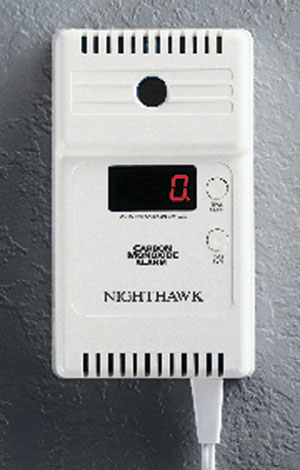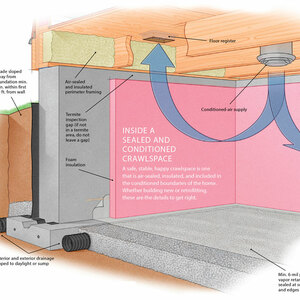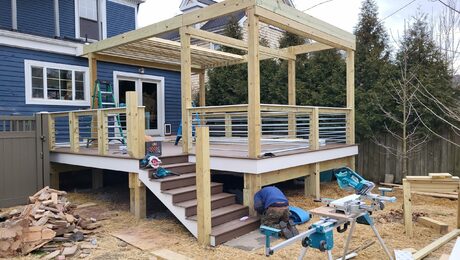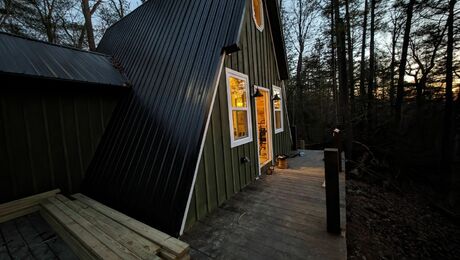What's the Difference: Carbon-monoxide detectors
Protect yourself from CO poisoning with any of these many different CO detector designs
Plug-ins or battery-powered? Area sensors or whole-house sensors?
Carbon monoxide (CO) causes more poisoning deaths in the United States than any other substance, about 300 per year just from residential combustion appliances, according to the American Lung Association. When houses leaked air like sieves, we didn’t worry too much about CO poisoning. But with tighter construction, it has become increasingly important to monitor the amount of pollution in a house or workshop.
CO gas is a byproduct of incomplete combustion that inhibits the blood’s ability to carry oxygen. And we all know what happens when the body is deprived of oxygen. In the home, CO can be produced by woodstoves, fires in the fireplace, furnaces and boilers, and any other appliance that burns gas or oil. On a job site, generators, air compressors, space heaters and power washers with gasoline or diesel engines all generate CO, not to mention vehicles and heavy machinery.
CO detectors operate either as area detectors or whole-house detectors. Area detectors mount on the wall or ceiling, measuring CO levels in just one area, while a whole-house detector measures CO levels in the house’s HVAC system.
CO detectors are either battery-powered or plug-ins. Ideally, plug-in models will also have a battery backup, and battery-operated models will have a low-battery indicator. The best area detectors have a digital readout that indicates both the exact current level of CO and recent peak levels.
All detectors sound an alarm when CO reaches harmful levels. Opinions differ as to what constitutes a harmful level, so some detectors are more sensitive than others. And because the effects of CO can build up over time, any decent detector will track both current CO levels and CO levels over a given period of time. Also, the CO detectors discussed here all have self-test functions that run even when no CO is detected.


Area detectors
Among area detectors, one of the best-known manufacturers is Kidde (www.kiddesafety.com; 800-654-9677). Kidde makes a variety of CO detectors, both plug-ins and battery-operated. Their AC-powered detectors plug directly into an outlet, and their Premium Plus model adds a cord that lets you place the detector away from the outlet. Also, some Kidde models combine CO detection with smoke/fire or explosive-gas detection.
Not all Kidde units have digital displays, but the Nighthawk Premium and Premium Plus have displays that show readings from 30 parts per million (ppm) to 999 ppm and flash an icon if the CO sensor fails.
Another well-known manufacturer of CO detectors is AIM Safe-Air Products (www.aimsafeair.com; 800-275-4246). The AIM 696 exceeds UL requirements by meeting new, higher standards set by the gas industry. Mike Busch, the editor of AVWeb, an aviation Web site, said the new standard “incorporates all the requirements of UL2034 plus additional tests requiring greatly increased accuracy, detector reliability and resistance to false alarms.”
The battery-operated AIM 696 is disposable. Its batteries and sensor are sealed in place and should last about four years. The digital display lists CO concentrations starting at 30 ppm. The AIM 696 also sets off visual and audible alerts if either the CO sensor fails the unit’s self-test or the batteries run low.
If the unit ever registers a false alarm and you call 911, AIM’s “No False Alarms” guarantee will pay $50 to the responding fire department. And if an AIM alarm ever results in a technician finding that a combustion appliance needs adjustment or repair, the company will pay the homeowners $50 toward that repair to encourage them to get it done.
AIM also makes a CO detector designed for use in the cockpits of aircraft. It registers much lower levels because CO poisoning is intensified at high altitudes—and pilots can’t step out for fresh air. The AIM 935 starts one alarm at 5 ppm of CO (much lower than the UL standard of 30 ppm) and then a more urgent alarm above 35 ppm. Some homeowners will be tempted to buy a low-level monitor for residential use so that they can push for even less CO than UL thinks is worth worrying about. But with a reading of 5 ppm, you’d call a qualified technician, not 911.
Whole-house monitors
For houses with forced air, Newtron Products Company (www.newtronproducts.com; 800-543-9149) offers an additional type of detector. Their Watchdog incorporates a detector into a furnace air filter that measures CO in air moving in the ducts (photo right). Because the detector works as a whole-house monitor only as long as the air handler is on, Newtron recommends that area CO detectors also be used in the house.
Newtron’s CO detector runs on a replaceable 9v battery. The Watchdog’s self-test system will sound an alarm if it detects a fault in the sensor or a low battery. It has no digital readout, but it does calculate accumulated CO levels along with how long those levels have existed. The alarm, which reverberates through the ductwork, is designed to sound only once potentially fatal conditions exist. Don Attermeyer of Newtron reports that they have had no confirmed false alarms in three years of operation, so take the alarms seriously.
Do today’s CO alarms go far enough?
For more information on the effects of CO, go to Dr. David Penney’s CO Headquarters (www.phymac.med.wayne.edu/FacultyProfile/penney/COHQ/co1.htm—animposing URL, but well worth the effort). Penney’s Web site identifies a list of physical, cognitive, emotional and visual effects that linger after chronic exposure to CO.
Penney says, “I strongly maintain that current CO alarms do not warn people accurately at low and ultralow CO levels. My own and others’ research shows that people are hurt at CO levels previously thought to be safe or benign.”
Contractors seeking training as CO analysts and homeowners looking for trained analysts in their area can contact the National Comfort Institute (www.nationalinstitute.com; 800-633-7058).
The market champ
Kidde’s AC-powered Nighthawk Premium comes with a cord so that it can be plugged in either at the outlet or farther away. Photo courtesy of Kidde.
Tough and accurate
The battery in AIM’s 696 CO detector can’t be replaced, so the whole unit must be replaced every few years. Photo by Scott Phillips.
Whole-house protection
The Newtron Watchdog monitors CO levels in the ducts of forced-air systems. This type of alarm supplements area CO detectors. Photo courtesy of Newtron Products





















